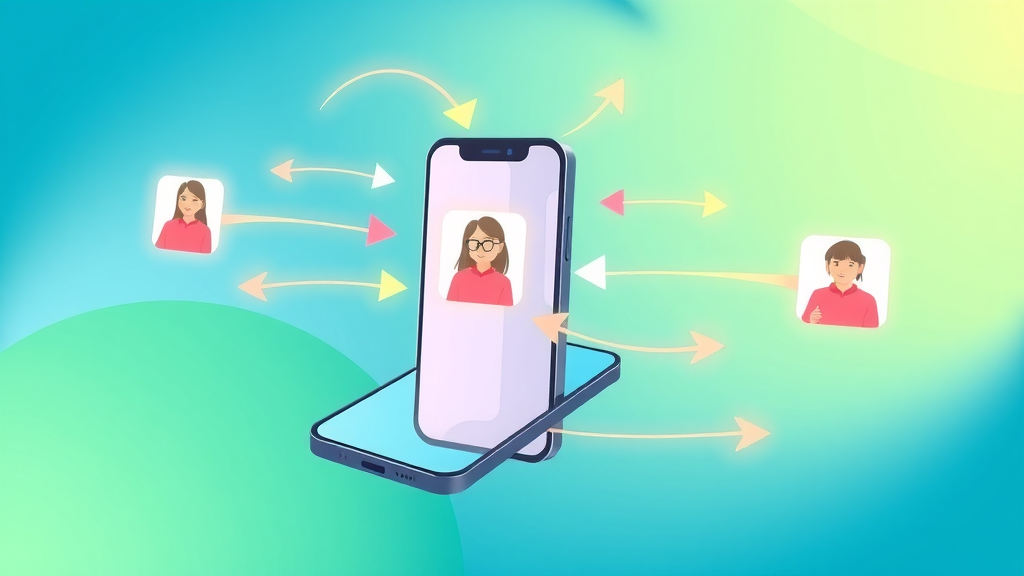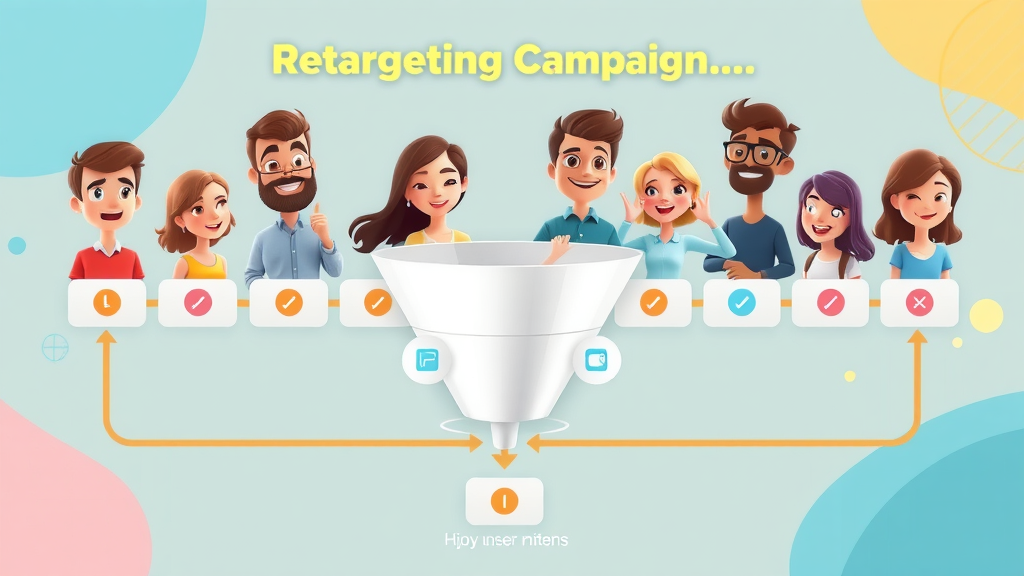Did you know that over 90% of app users churn within the first month, but retargeting for mobile apps can recover up to 60% of those lost users? It’s a game-changer most app marketers underestimate, even as app competition intensifies daily. This guide is your ticket to understanding and fully leveraging retargeting for mobile apps—packed with proven strategies, actionable insights, and expert advice to help you reclaim lost users, skyrocket engagement, and drive conversions. Whether you’re an app marketer striving to outpace the competition or a business owner seeking to maximize mobile ROI, you’ll find practical wisdom to put to work today.

A Surprising Statistic: Why Retargeting for Mobile Apps is Your Missed Opportunity
If you’re not making retargeting for mobile apps a central part of your marketing strategy, consider this: industry data shows only a small percentage of mobile apps tap into powerful retargeting strategies. Meanwhile, successful brands that do invest report conversion rate improvements of up to 50%, rapidly increasing user engagement and campaign ROI across the board. In today’s ultra-competitive app market, neglecting mobile retargeting spells missed revenue and low user retention. With thousands of new apps launching monthly, getting initial installs isn’t enough—it’s keeping users active and engaged through strategic app retargeting that sets winning businesses apart. Early adopters of mobile app retargeting have enjoyed lower ad spend wastage, higher acquisition, and remarkably improved app growth trajectories.
Retargeting Insights from Industry Experts
Leading experts consistently highlight the sheer impact retargeting for mobile apps can make. By re-engaging users who have previously shown interest but drifted, marketers extend customer lifecycles, foster brand loyalty, and maximize lifetime value. With the integration of deep linking, push notifications, and smart segmentation, app retargeting today isn’t just about “reminding”—it’s about creating highly personalized, valuable experiences at the right moment. This approach helps mobile app marketers convert passive users into loyal fans through precisely timed retargeting ads based on real user behavior data, unlocking unprecedented campaign performance.
"Retargeting can boost user engagement by as much as 147%—yet most mobile apps barely scratch the surface." – Dr. Erica Tran, Mobile Marketing Specialist
What You'll Learn About Retargeting for Mobile Apps
Core principles of retargeting for mobile apps
Top app retargeting strategies for user acquisition and retention
Tactics to increase user engagement and conversion rates
Actionable steps to launch and optimize mobile app retargeting campaigns

Introduction to Retargeting for Mobile Apps
Retargeting for mobile apps has become the linchpin for brands aiming to maximize their mobile growth. In a crowded marketplace where user attention is fleeting, powerful retargeting strategies help marketers re-engage users who might otherwise be lost. Unlike web-based remarketing, mobile app retargeting leverages app-specific data—like in-app behaviors and push notification responses—to deliver extremely relevant messages, boost re-installs, and promote higher user engagement. With every tap, swipe, and in-app event contributing to an ever-evolving profile of user intent, retargeting for mobile apps becomes both an art and a science—one that every serious app marketer should master to gain a definitive competitive edge.
What is Retargeting for Mobile Apps?
Retargeting for mobile apps is a marketing tactic focused on re-engaging users who downloaded but stopped using your mobile app—or who abandoned it before completing desired actions, such as registration or purchase. Instead of relying solely on generic ads, mobile app retargeting delivers tailored retargeting ads based on actual in-app behavior, app usage frequency, and user preferences. This can be applied through push notifications, dynamic banners within other apps, or even personalized emails. At its core, app retargeting aims to drive high relevancy and contextual engagement for users, making your messaging feel timely and meaningful, which ultimately boosts both user retention and conversion rate.
How Does Mobile Retargeting Work in Today’s Digital Space?
Mobile retargeting operates by identifying users who have previously interacted with your app—be it through install, usage, or an abandoned purchase flow—and reintroducing your brand to them across different mobile touchpoints. By leveraging user IDs, device identifiers, and behavioral data, marketers craft retargeting ads that follow users as they move through the mobile ecosystem. Integration of deep links enables these ads to deliver users right back to specific app pages, reducing friction and optimizing the user experience journey. This seamless approach, made possible by advances in attribution technology and real-time user data analysis, allows app marketers to fine-tune their campaigns for maximum impact and minimal ad spend.
The Essentials: How App Retargeting Fuels User Engagement
Elevated user engagement is at the heart of every successful app marketing strategy. By using retargeting for mobile apps, brands can nurture relationships with existing and lapsed users. Sophisticated segmentation lets marketers send personalized ads to users at the perfect time—after an app install, upon app inactivity, or post-cart abandonment. Smart retargeting strategies also factor in deep linking, so each click or tap by the user seamlessly returns them to their last-interacted app experience, maintaining continuity and reducing obstacles on the path to conversion.
Understanding User Engagement and Retargeting Ad Impact
The impact of well-designed retargeting ads on user engagement is clear: they significantly increase the likelihood that users will re-open an app, complete transactions, or even share the app with friends. This is because retargeting campaigns tap into user behavior insights, delivering personalized ad experiences and timely reminders that resonate deeply. For app marketers, these tailored triggers turn occasional users into regulars—boosting important KPIs like session frequency, in-app purchases, and lifetime value. By leveraging audience segments and dynamic creative, mobile app retargeting delivers ongoing value, keeping users invested and engaged well beyond their initial download.

The Role of Mobile Retargeting in User Acquisition
While user acquisition is often seen as a separate stage from engagement, mobile retargeting bridges the gap by guiding lost or cold leads back into the app funnel. By using retargeting ads to address users who didn’t convert on the first try, marketers give themselves a crucial second chance. Segmentation allows you to identify high-potential users—those who have previously shown interest but failed to make a purchase, for example—and target them with irresistible personalized ads. The result? Higher conversion rates, increased ROI on acquisition campaigns, and a healthier, more loyal active user base for your mobile app.
The Data: Comparing Retargeting for Mobile Apps vs. Web-Based Strategies
Mobile App Retargeting |
Web Retargeting |
|
|---|---|---|
Conversion Rates |
30-50% higher; deep links boost completion of in-app actions |
Good for web purchases, but lacks app-specific signals |
User Engagement |
Push notifications and deep linking enhance engagement |
Email, web banners less interactive for mobile users |
Campaign ROI |
Lower ad spend per returning user; higher lifetime value |
Higher cost per acquisition; less personalization |
Key Benefits of Retargeting for Mobile Apps
Increased conversion rates through personalized retargeting ads
Enhanced user engagement via push notifications and deep linking
Reduced churn and higher ROI from optimized retargeting campaigns
Deep Dive: Mobile App Retargeting Strategies to Try Now
Segmentation Tactics: Creating the Right Audience Segment
Segmentation is the cornerstone of impactful app retargeting. Instead of generic messaging, marketers use behavioral, demographic, and in-app action data to create precise audience segments. This makes it possible to target users who abandoned a purchase versus those who simply stopped using the app. By understanding user journey paths, marketers design campaigns tailored to each user profile—a personalization that drives up conversion rates and lifetime value. The best app retargeting strategies take an iterative approach, continually refining segments based on real-time performance insights so you always reach the most valuable users with the right message at the right time.

Customizing Retargeting Ads for Diverse User Profiles
One-size-fits-all advertising tanks in today’s mobile app ecosystem. By customizing retargeting ads to suit unique user profiles—based on interests, behaviors, or spend levels—marketers can serve truly personalized ads that cut through the clutter. Successful campaigns might target dormant users with a time-limited discount, or encourage users who completed a trial to subscribe with helpful guides. Leveraging dynamic creative technology, mobile app retargeting makes it possible to automatically adjust copy, visuals, and call-to-actions based on audience segment data, continuously increasing engagement and enhancing user experience.
Leveraging Deep Links and Push Notifications
Deep links are the secret weapon for frictionless retargeting. By embedding them in your ads or notifications, you transport users directly to specific app content—say, right back to an abandoned cart or a latest game update. Push notifications add another layer of timeliness, instantly reminding users of new opportunities, promotions, or content inside your app. Combining deep linking with smart push strategies means users don’t have to start from scratch—they’re guided into exactly the right experience, boosting engagement and reducing the chances of drop-off.
"Audience segmentation unlocks the true value in your retargeting campaigns by delivering offers users can't ignore." – Lydia Kim, App Growth Consultant
Crafting Successful Retargeting Campaigns for Mobile Apps
Designing Compelling Retargeting Ad Creative
The success of any retargeting campaign for mobile apps hinges on the quality of its ad creative. High-performing retargeting ads capture attention with bold visuals, crystal-clear copy, and a strong, relevant call to action. Personalization is key—your creative should reflect where users are in their app journey and what actions you want them to take next. Testing different themes, color schemes, and messaging helps you identify what resonates with each user segment, ensuring your retargeting efforts remain fresh and effective.
Optimizing Conversion Rates Through A/B Testing
A/B testing isn’t just a buzzword—it’s an essential practice for successful mobile app retargeting. By systematically experimenting with different ad variants, landing pages, and call-to-actions, marketers gain invaluable insights into what drives clicks, installs, and conversions. This data-driven approach minimizes guesswork, increases campaign efficiency, and ensures you’re getting maximum value from every ad dollar. Consistent optimization is crucial, especially as user behavior trends shift: revisit your conversion rate benchmarks regularly and be ready to pivot creative and targeting strategies for ongoing app success.

Deep Linking Best Practices for Seamless User Journeys
To unlock the full power of deep linking in mobile app retargeting, ensure all app pages are properly indexed and that every link directs users to the intended in-app destination. Always test your deep links across devices and platforms to avoid frustrating misroutes. Consider combining deep links with custom landing screens or personalized welcome messages to boost engagement upon return. Synchronizing deep linking efforts with your segmentation and push notification strategies creates a smooth, personalized journey from the first tap back into your app to the completion of high-conversion actions.
Measuring Success: KPIs for Retargeting for Mobile Apps
Conversion rate and user acquisition metrics
User retention and lifecycle value tracking
Analyzing audience segment insights for campaign optimization

Common Challenges in Retargeting for Mobile Apps and How to Overcome Them
Ad fatigue and creative wear-out: Regularly refresh ad creative and test new formats to maintain user interest and prevent banner blindness.
Privacy regulations and data use restrictions: Stay compliant by implementing transparent consent flows and using privacy-first data collection and attribution tools.
Ensuring accurate deep linking and attribution: Employ robust tracking software and test all deep links to guarantee users land in the right place without errors or delays.
Expert Tips: Advanced App Retargeting Strategies for Maximum Impact
Incorporating Push Notifications for User Engagement
Push notifications remain one of the most effective tools for real-time user engagement in app retargeting. Craft clear, concise, and highly relevant messages—personalizing your push with names or relevant offers based on user data. Optimal timing is everything: experiment with push delivery windows to see when users are most likely to act. Remember to combine push notifications with actionable deep links, allowing users to complete valuable actions instantly upon clicking the notification, further enhancing the user journey and boosting conversion.

Dynamic Retargeting Campaigns Using Real-Time Data
Real-time data fuels the next level of mobile app retargeting. By closely monitoring user interactions—such as in-app purchases, session frequency, or feature usage—marketers can automatically trigger dynamic retargeting ads and push notifications tailored to each user’s current behavior. These adaptive campaigns address changing user needs, maximizing both engagement and conversion rates. Incorporating AI and machine learning allows for rapid response to patterns and automatically segments audiences for hyper-targeted campaigns that sustain long-term app growth and user satisfaction.
People Also Ask About Retargeting for Mobile Apps
What is app retargeting and how does it benefit mobile app marketers?
App retargeting is a marketing strategy focused on re-engaging existing app users or those who have previously installed but stopped using your app. It benefits marketers by increasing conversion rates, lowering the cost of user acquisition, and extending user lifetime value. By serving highly relevant retargeting ads across devices or channels, mobile marketers can encourage users to return, complete purchases, and engage more deeply with the app’s features.
How do you measure the success of mobile app retargeting campaigns?
Success in mobile app retargeting campaigns is measured through key performance indicators such as conversion rate, user retention, active users, and campaign ROI. Marketers often track re-engagement rates, in-app events, and revenue generated from retargeted users. Continuous analysis of audience segment performance and lifecycle metrics helps optimize campaigns for greater efficiency and higher returns.
What challenges do marketers face in mobile app retargeting?
Common challenges include ad fatigue (where users become desensitized to repetitive ads), navigating privacy regulations and user consent, and ensuring reliable deep linking for a seamless user experience. Marketers must stay agile, frequently update creative, comply with data privacy standards, and use robust attribution tools to maintain campaign accuracy and effectiveness.

FAQs: Retargeting for Mobile Apps Explained
Which platforms support retargeting for mobile apps?
Major platforms supporting retargeting for mobile apps include Facebook Ads, Google Ads, TikTok Ads, and specialized solutions like Adjust, AppsFlyer, and Branch. These platforms provide comprehensive tools for audience segmentation, dynamic creative, deep linking, and attribution to track user behavior and campaign results effectively.
How often should you refresh your app retargeting ads?
Refreshing app retargeting ads every two to four weeks is recommended to prevent ad fatigue and maintain user interest. Rotate creatives, offers, and messaging based on campaign data and user engagement trends. Regular updates ensure your retargeting efforts remain effective as user behavior and market dynamics evolve.
What are the best practices for deep linking in mobile app retargeting?
Best practices for deep linking include thoroughly testing all deep links across devices and platforms, creating fallback pages for users without the app installed, and integrating personalized landing experiences. Ensure that your links direct users to the most relevant in-app content and are tracked properly for performance measurement and attribution.
Key Takeaways: Retargeting for Mobile Apps
Retargeting for mobile apps is essential for retaining and re-engaging users.
Strategic use of user data, segmentation, and creative updates ensures sustained campaign success.
Commit to continuous optimization for maximum ROI and user engagement.
Conclusion: Begin Your Retargeting Journey for Mobile Apps Now
Ready to drive growth? Commit to smart retargeting for mobile apps—start optimizing your campaigns, segments, and creative today for unmatched results.
Are you letting Potential Sales Walk out the Door without following up? Recapture Lost Sales with Retargeting Strategies by Downloading your copy of "The Ultimate Guide to Retargeting for Small Businesses – Your Complete Blueprint to Winning More Sales!" at this link.
For More Information on this Topic, Go To our online marketing magazine 'Effective Marketing Strategies' at this Link https://viployalty-oki.us/
Watch our expert video demonstration to see real-world strategies for boosting user engagement with app retargeting—complete with data-driven insights and best practices. (Embed your video here!)
Explore actionable tips and live walkthroughs for crafting high-conversion retargeting ad creative in this detailed best practices guide. (Embed your video here!)
 Add Row
Add Row  Add
Add 




Write A Comment